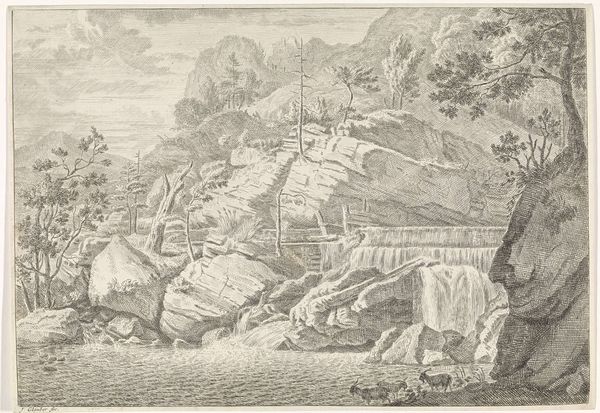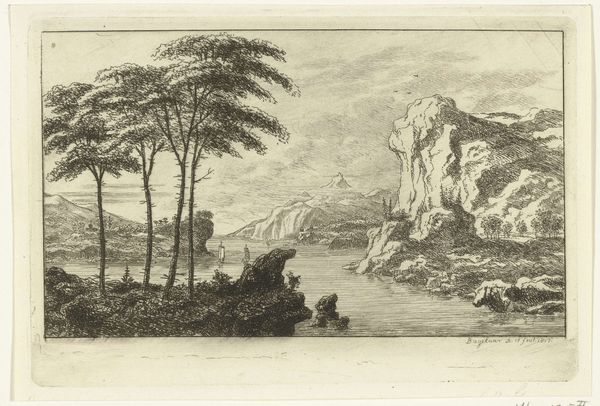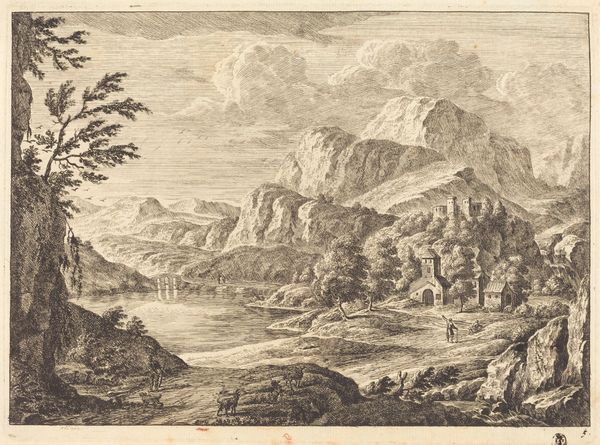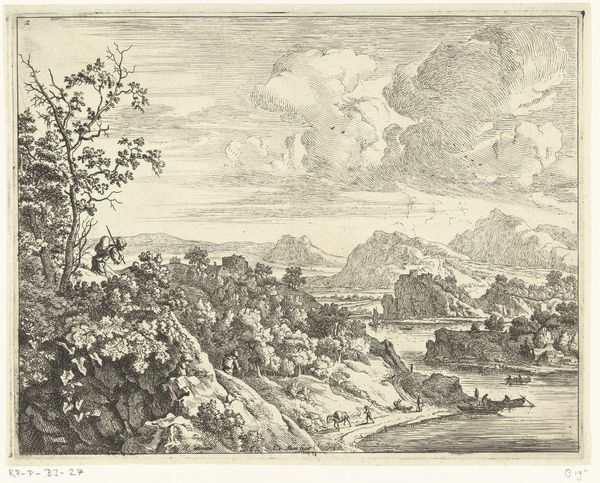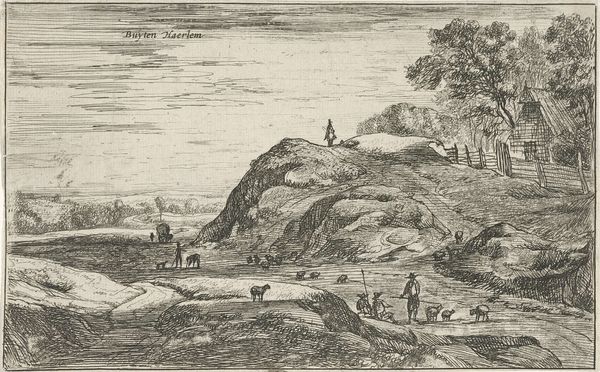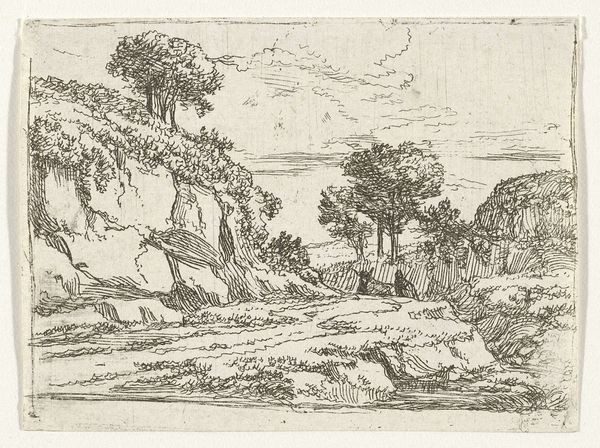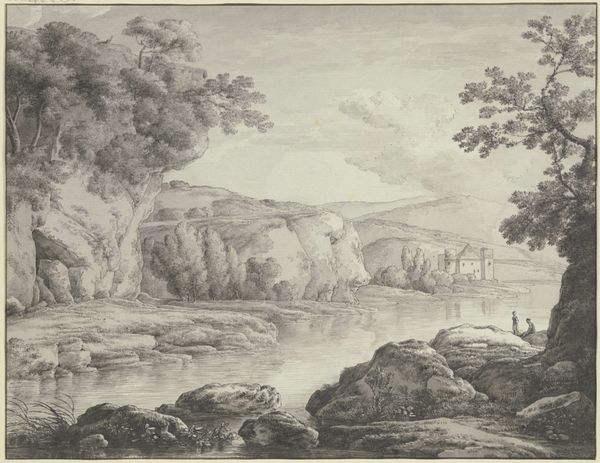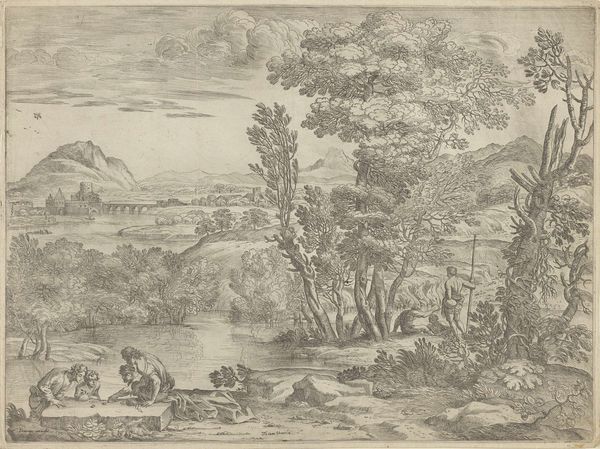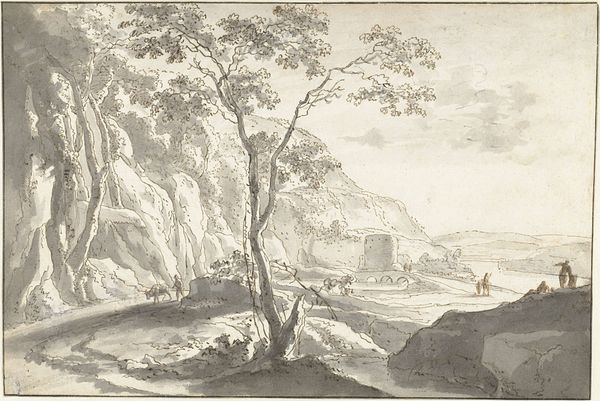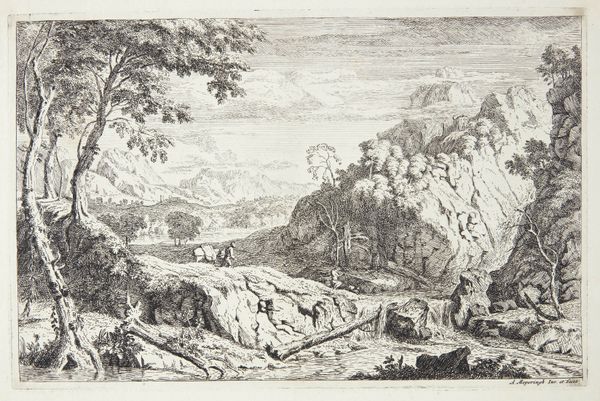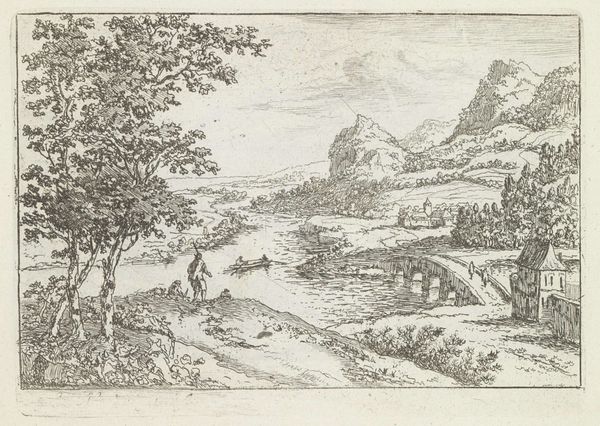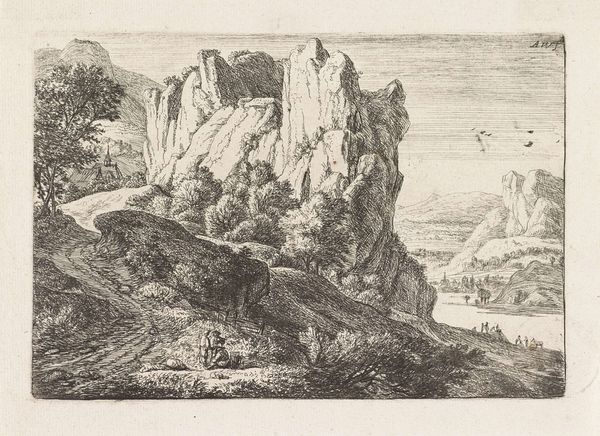
drawing, etching, ink
#
drawing
#
baroque
#
dutch-golden-age
#
etching
#
landscape
#
figuration
#
ink
Dimensions: height 318 mm, width 418 mm
Copyright: Rijks Museum: Open Domain
Curator: Look at the textures—the granular rocks against the fluid water. It gives a feeling of vastness somehow. Editor: I agree, and what draws me in is that combination of fragility and fortitude. The light seems to suggest resilience in nature, the figures appear small in comparison to nature’s greatness and indomitable features. I think the rendering is incredibly affecting. Now, we're looking at "River Landscape with Rocky Coast" by Jan van Ossenbeeck, made between 1663 and 1674 using etching and ink. Curator: The rocky coast suggests the border and a crossing of such, maybe a liminal state that goes beyond just a geographical location. Consider how landscape in Dutch Golden Age painting often intersects with narratives of nationhood and identity. Editor: Absolutely, these landscapes rarely depict untouched nature; instead, we are witnessing the rise of anthropocentrism in nature that is rendered and repurposed by the artist in ways that reflect our culture and traditions. This is echoed through symbols of stability, like those rigid rocks and resilient fauna and flora which, contrasted with those tiny human figures, tell an ongoing story. Do you feel it, too? Curator: Very interesting take, this relationship with nature does take precedence with Baroque traditions. The artist, perhaps, uses figuration to create scale, not as its own subject, thus reminding us about power relations between humanity and its place in nature and in relation to it. The river almost disappears; we barely perceive a clear trajectory, and therefore movement, with our limited gaze on this landscape. Editor: And maybe that's the essence of it—an interrupted flow, a tension between what remains static, represented by the stoic stone texture and sharp contrasts in tone, versus the ever-changing nature of water, as this element comes to be overpowered by rock, therefore by culture. Curator: Yes, there’s certainly a suggestion here that we are subjects within this context, actively shaped and formed by social environments and imbedded politics. So much depth comes to surface, pardon the pun, as we see nature in direct correlation to humans, and, overall, with their shared environment. Editor: Well, exploring those connections has certainly deepened my understanding of Ossenbeeck's artistry!
Comments
No comments
Be the first to comment and join the conversation on the ultimate creative platform.
